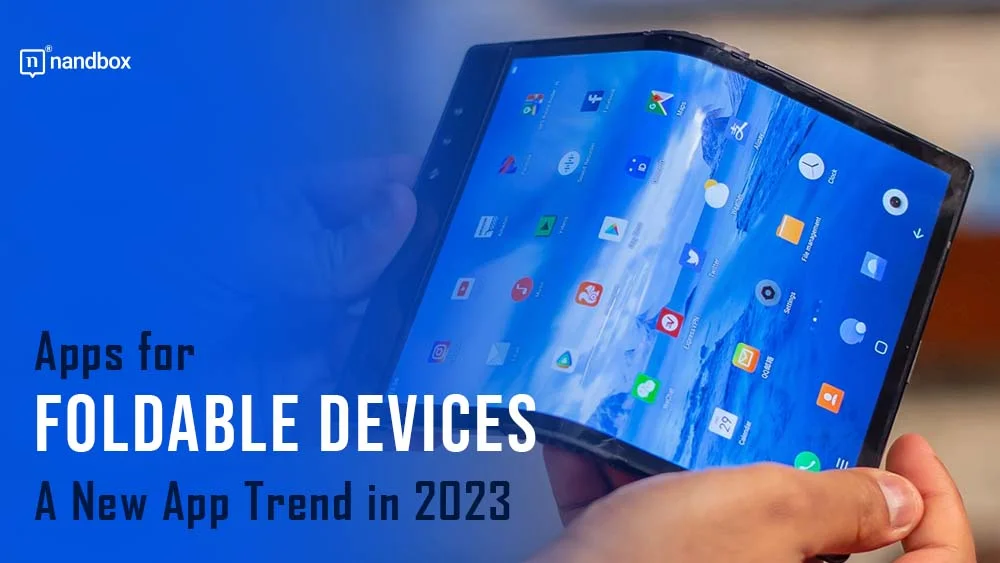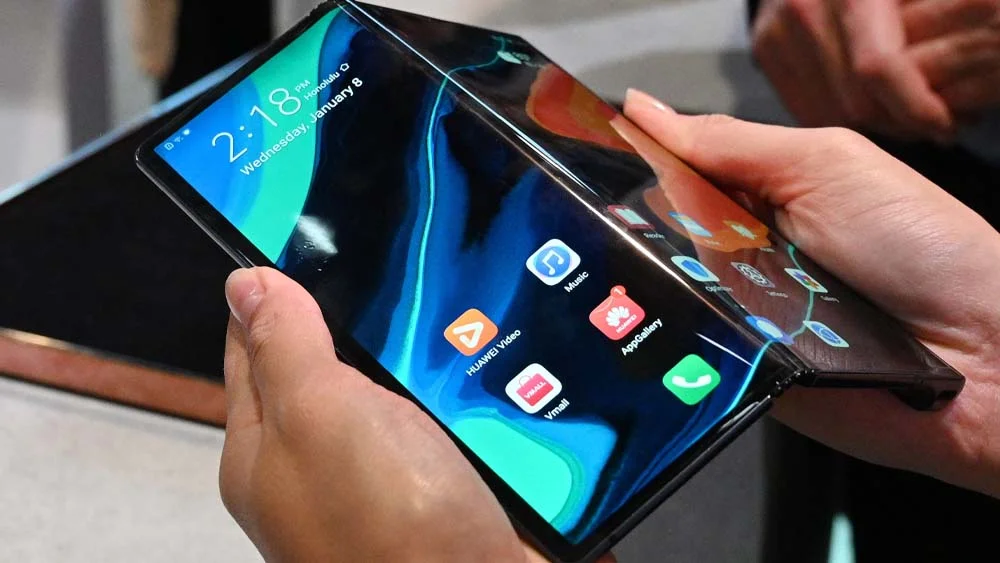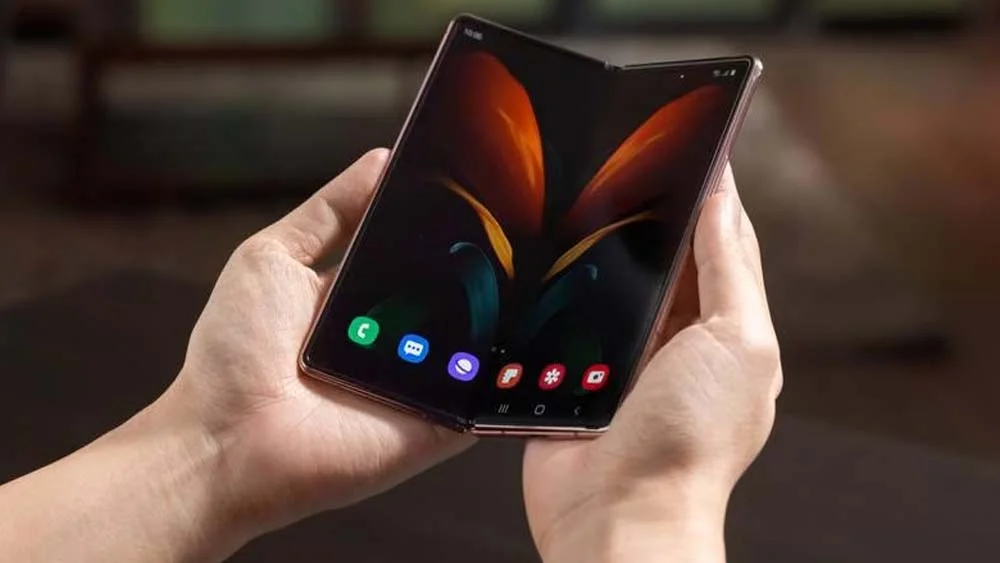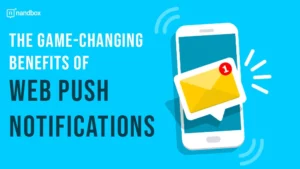The Rise of Apps for Foldable Devices in 2023
As foldable devices become more popular, app developers are starting to take notice. With the ability to fold and unfold screens, these devices offer new opportunities for app design and functionality. In this article, we’ll explore the latest trends. In the development strategies of apps for foldable devices and what you can expect to see in the coming years.
After Samsung debuted the Galaxy Z Fold in 2019, a brand-new competitor with an original design entered the market. Breaking the monotony of conventional smartphones.
The question remains, though: “Is it conceivable that foldable technology might make modern cellphones obsolete?”
The extent to which they are functional determines everything. Time will reveal. For the time being, we will observe how things grow. Additionally, consider how we may join the trend by creating some unique things for foldable gadgets. This is a great opportunity to start investigating the new technologies. Ones that are underlying Android foldables if you want to stay on top of the most recent trends and advancements.
What Is a Foldable Device in 2023?
A foldable device, or “foldable phone,” as some refer to it, is a smartphone that draws inspiration from vintage flip phones. The whole concept of this device is that it has something that makes it bendable in two. The screen of these devices is divided into two for the whole “folding” process to take place. The first company to attempt to create a device with inspiration from the old flip phone designs is Samsung. (Yes, the ones that were very trendy in the early 2000s.) The moment the very first flip phone came out, people’s curiosity was at a very high level. People were intrigued, wanting to know how a smart phone could become “foldable.”
The whole thing was new to people. Furthermore, these types of devices have certain applications that people develop in a certain way. In this article, we will discuss apps for foldable devices. That is, to get to know them better and broaden our app development horizons.
Simply put, foldable devices are a new type of mobile device that can be folded and unfolded. Allowing for a larger screen size without sacrificing portability. They are important because they offer a new form factor for app developers to design for. This can lead to new and innovative app experiences. Additionally, we expect that foldable devices are going to become more popular in the coming years. That’s why app developers who are able to create apps optimized for these devices will be at an advantage.
How Do Foldable Devices Impact App Development?
This is a major question that we found frequently asked in tech communities. Let us discover the impact of foldable devices on mobile application development. The approach that app developers take to the design and development of their software is shifting as a result of foldable smartphones. These devices have a unique form factor thanks to their ability to fold and unfold, and as a result, they need to optimize certain applications for both the folded and unfolded states of the device.
This indicates that app developers need to explore new design elements in order to offer a smooth user experience. Some examples of these new design elements are split-screen capabilities and support for multiple windows. In addition, foldable devices require applications to be versatile and adaptive to a variety of screen sizes and aspect ratios, which can be a challenge for software developers. However, those that are able to grasp app development for foldable devices will be well-positioned to take advantage of this growing market. That is why we expect this market to grow significantly over the next several years.
According to Statista, the market for foldable smartphone displays will in fact reach 75.6 million units by 2025. It’s time that you became familiar with the fundamentals of app development for foldable devices.
Designing Apps for Foldable Devices: Key Considerations
When it comes to building applications for foldable devices, developers have a number of important concerns that they need to keep in mind. Apps need to be optimized for both the folded and unfolded states, which means they need to be able to adjust to multiple screen sizes and aspect ratios. This is the first and most important thing that needs to be done.
In order to accomplish this, the design process must be fluid and malleable, and it must take into account the specific dimensions of foldable devices. In addition, programmers need to think about additional design aspects, such as capability for split-screen viewing and support for multiple windows, in order to make the user experience as smooth as possible. App developers may create apps for foldable devices and take advantage of this new market if they keep these aspects in mind while developing apps for mobile devices.
The Benefits Foldable Devices Bring to the App Development Market
- The primary objective of manufacturers developing foldable electronic gadgets is to give users an immersive experience by making a huge screen available to them.
- The foldable technology combines the functionality of two panels into a single, much larger screen. This is considered very handy by certain people.
- Users now have to decide whether they want a large screen or a small form factor in their electronic devices. They get everything they need in a single gadget thanks to foldable technology.
- Foldable smartphones have the potential to offer screens that are twice as large as those found on regular devices.
- New kinds of material will be able to be produced as a result of the availability of greater screen space, and these new kinds of content will make full use of the expanded display area.
- Creators will be able to release these new kinds of content.
More features: the screens of today’s smartphones are very small, which means that they cannot accommodate all of the functions that are required. Users will be able to access a greater number of features on a single display by taking advantage of foldable devices, which will make it easier to develop multi-screen applications.
Tablets and smartphones that can fold into themselves will one day dominate the market for such gadgets, and when they do, they will bring with them a wealth of new possibilities.
Apps for Foldable Devices: The Challenges That Come With It All
With every new technological evolution, there are certain challenges that you will find yourself facing. Make sure you are aware of the difficulties you will face before starting to create an app for foldable smartphones. In order to create a top-notch and user-friendly foldable application, take into account the following factors:
A High Quality Standard
Nobody is claiming that creating apps for foldable devices is a piece of cake, but that doesn’t mean it can’t be done. You will need to keep in mind that foldable smartphones are required to offer several viewing angles and have a different aspect ratio than conventional smartphones.
Despite this, the expectations of users have not changed. When using your app, they want to enjoy a smooth experience without any hiccups. Therefore, you must be familiar with the process of developing applications for foldable smartphones; otherwise, your app won’t succeed.
Testing and Optimizing Apps for Foldable Devices
Testing and optimizing apps for foldable devices is crucial to ensuring a seamless user experience. It can be challenging as it will require more testing. Developers should test their apps on different foldable devices to ensure compatibility and functionality. They should also optimize their apps for different screen sizes and aspect ratios, as well as take advantage of new design elements like split-screen functionality and multi-window support. By doing so, developers can create apps and optimize them for foldable devices. Moreover, provide a unique and engaging user experience.
Adjustments and Changes
As soon as your application is available to the public, you will have to implement a number of modifications depending on the comments and suggestions that users make. If you currently have an app and you want to make it compatible with foldable devices, then this is extremely vital for you to do.
Examples of Successful Apps for Foldable Devices
As foldable devices become more popular, developers are creating apps that take advantage of their unique features. One example is the Samsung Galaxy Fold. Which has a built-in app continuity feature that allows users to seamlessly switch between the cover screen and the main screen.
Apps like WhatsApp, Instagram, and Microsoft Office have all been optimized for the Galaxy Fold. Providing users with a more immersive and engaging experience. Another example is the Huawei Mate X. It has a foldable screen that allows users to multitask and use multiple apps at once. Apps like WeChat and QQ have been optimized for the Mate X, providing users with a more efficient and productive experience.
Final Thoughts
In the realm of portable technology, foldable devices are only getting their feet off the ground. The foldable smartphones produced by Samsung and Huawei are a particularly expressive example. We expect the future of the technology industry to have a huge multitude of foldable devices. That is according to the predictions of experts. This is why we offer you a simple solution. If you aim to develop an app for foldable devices.
Our no-code app builder, nandbox, will help you create a seamless app with multiple crucial features in no time. All you have to do is add your desired features. Also preferred modules by dragging and dropping them into our app development window. You only need to simply customize our pre-made template (of your choice, of course).
It is simple, costs a fraction of the cost, and consumes no time at all. Sign up now for nandbox’s native no-code app builder and take application development to the next level.







